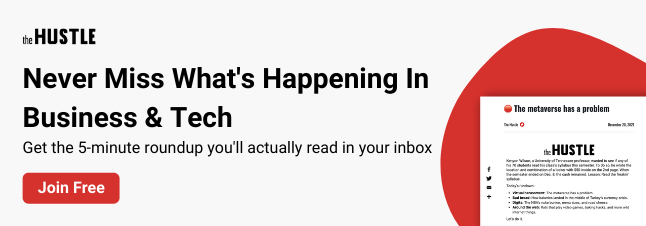There’s a talent shortage looming that will cost companies $8.5T in lost revenue by 2030. This growing realization requires businesses to rethink their approach to hiring and retention.

Employees today demand work-life balance. And what better way to provide it than with paid time off?
After a tumultuous 2020, 17% of employers are reevaluating their paid holiday packages, but only 14% are making changes. This is an opportunity to set your business apart to attract top employees.
What are paid holidays?
Paid holidays are days off from work that are compensated at the employee’s regular rate of pay. These days are in addition to the employee’s vacation days and sick days.
Those who work on holidays are also given time and a half for pay. So if an employee’s regular hourly pay is $10/hr, they’ll receive $15/hr when working on a holiday.
Paid holidays are not required by law, but are a common benefit offered by employers. In the United States, the federal government does not mandate paid holidays, but many states have their own laws.
What are typical paid holidays?
Paid holidays vary from state to state and company to company. In the US, there are six typical paid holidays:
- New Year’s Day (Jan. 1)
- Memorial Day (last Monday in May)
- Independence Day (July 4)
- Labor Day (first Monday in September)
- Thanksgiving Day (fourth Thursday in November)
- Christmas Day (Dec. 25)
Paid holidays by law
The federal government has specific holidays that government agencies and banks must close on (by law). Companies in the private sector aren’t required to close on federal holidays (or to offer paid time off) but can choose to do so.
There are 11 federal holidays, which include the common ones mentioned above, along with:
- Presidents Day (third Monday in February)
- Martin Luther King Jr. Day (third Monday in January)
- Veterans Day (Nov. 11)
- Juneteenth (June 19)
- Columbus Day or Indigenous Peoples Day (second Monday in October)
The federal government recently added Juneteenth (June 19) as a national holiday, but only certain states observe it, such as Georgia, New Jersey, and New York.
The 2021 Workforce Absence Management Survey shows only 5% of companies offer paid time off for Juneteenth. If you’re a private sector business with African American employees, consider adding it to your PTO (paid time off) package.
State holidays
States are separate from the federal government and can institute their own paid holidays. For example, Utah celebrates Pioneer Day on July 24, which was the day in 1847 that Brigham Young led the first group of pioneers from the Church of Jesus Christ of Latter-day Saints (commonly known as the Mormon church) into the Salt Lake Valley.
Rhode Island has Victory Day, celebrated on the second Monday of August, which is the day World War II ended.
All federal businesses offer paid time off for these holidays, and private companies have the option to do the same.
How paid holidays policies work
Employers typically give paid holidays to full-time employees who work at least 35 hours per week, though some organizations extend holiday pay to part-time workers as well.
Once the company determines which holidays have paid time off, it develops a policy that outlines the conditions. Some companies might make new hires ineligible for paid holidays until they work for a certain period of time. Others might stipulate that part-timers must work 25 hours weekly to accumulate holiday PTO.
Some organizations offer a total number of total days off, which employees can use for vacation days, sick days, personal days, and holidays. Others may set aside paid time off for specific holidays.
In the Workforce Absence Management survey, half of the responding firms managed sick, vacation, and personal days separately. Other employers group them together under a single PTO category.
In critical industries that require constant monitoring, such as power companies, hospitals, and manufacturing, a skeleton crew may be used during the holidays. A skeleton crew is the bare minimum number of employees needed to keep a business operating like normal.
Paid floating holidays
Floating holidays are days you can give employees to use whenever they choose. These are in addition to paid holidays and can be used for birthdays, religious holidays, and other personal reasons.
For instance, a company could allow five floating holidays a year, and employees can choose days that fit their culture, religion and lifestyle, instead of taking off traditional holidays like Christmas or Easter. Some employers allow employees to accrue unused floating holidays toward future vacations.
Alternatives to paid holidays
If your organization doesn’t provide paid holidays, you can offer other flexible working arrangements, including:
- Telecommuting: Allow employees to work from home every day or during specific periods, such as holidays.
- Flexible work hours: Allow employees to choose their own work hours as long as they meet their team’s deadlines and goals.
- Compressed workweeks: Allow employees to work longer hours for four days each week and have the fifth day off.
- Job sharing: Allow two or more employees to share one full-time position and work part-time hours.
These options give employees flexibility in how they spend their time on holidays and non-holidays. But if these aren’t doable, then consider paid floating holidays.
How to set up paid holiday benefits
Federal holidays. State holidays. Paid floating holidays. These are some options you can include in your holiday benefits package. What you choose depends on your industry, company culture, and employees.
Nathan Deily, chief people officer at venture studio nth Venture, recommends getting an Society for Human Resource Management (SHRM) membership. It’s an organization that helps employees and employers work together to improve workplaces.
By becoming a member, you can access a large data set of formally reviewed and approved policies that comply with state and federal laws.
“Compliance with these laws is the main hurdle to address in creating any kind of wage and hour policy, whether for salaried or hourly employees,” says Deily.
Other things to consider include:
- Establishing eligibility requirements for paid holidays (who will get paid holidays off and how it will accrue)
- Surveying employees to learn their holiday requests (some will want religious or cultural days off vs. national holidays)
- Determining if the company will close on a specific holiday or if employees can request individual time off
- Adding remote workers in your policy
- Being parent-friendly with your policy (allowing more time off during the summer or offering telecommuting/ flexible schedules)
- Calculating business finances to ensure you can afford your holiday package
- Assessing competitor holiday packages to maintain a competitive edge
Paid holiday policies aren’t a one-and-done deal. They require ongoing adjustments, so remember to revisit and update your policy as your company and employee needs change.
How businesses can promote taking days off
Offering an exceptional paid holiday package is a great start, but many workers feel they can’t take time off due to the fear of falling behind.
As an employer, you can ease their worries by requiring everyone to take a certain number of days off per year. When someone is away, have a colleague cover their tasks, so there isn’t a pile of work when they return.
Other ways you can encourage workers to use their paid holidays include:
- Enforce a no-contact policy for employees away on holiday so they can truly recharge
- Communicate the importance of PTO by explaining how it can improve their work-life balance and prevent burnout
- Be flexible by allowing employees to take floating holidays on short notice













